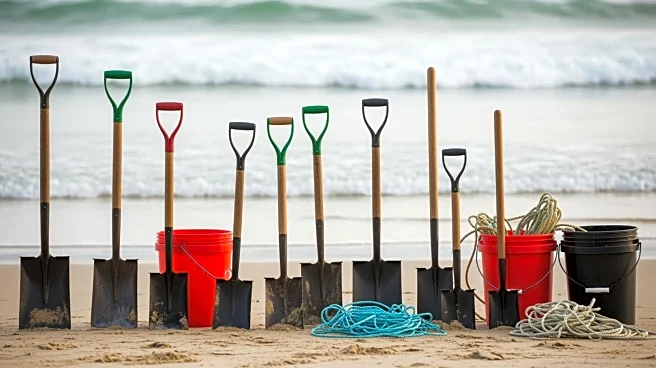What's Happening?
On Christmas Island, tens of millions of red crabs are undertaking their annual migration to the ocean. The island's human population, numbering around 1,200, is using leaf blowers and garden rakes to assist
the crabs in their journey. The migration, triggered by the start of the Southern Hemisphere summer rains, sees up to 100 million crabs moving from forest burrows to the shoreline to breed. The crabs' movement over roads and gardens requires residents to clear paths to prevent injury to the crabs.
Why It's Important?
The red crab migration is a significant ecological event on Christmas Island, showcasing the unique biodiversity of the region. The involvement of the local community in facilitating the migration highlights the harmonious relationship between humans and nature. This event underscores the importance of preserving natural habitats and the role of community engagement in conservation efforts. The migration also attracts attention to the island's ecological significance, potentially boosting eco-tourism and awareness of environmental conservation.
What's Next?
The female crabs are expected to release their spawn into the ocean at high tide on November 14 or 15. Following the spawning, the young crabs will spend a month in the ocean before returning to the island. The community will continue to assist in the migration process, using leaf blowers to clear paths for the returning young crabs. This annual event may lead to increased scientific interest and studies on the island's unique ecosystem.
Beyond the Headlines
The red crab migration highlights the importance of maintaining ecological balance and the potential impact of climate change on natural events. It also raises questions about the role of human intervention in natural processes and the ethical considerations of such involvement. The event may inspire further research into the island's biodiversity and conservation strategies.













